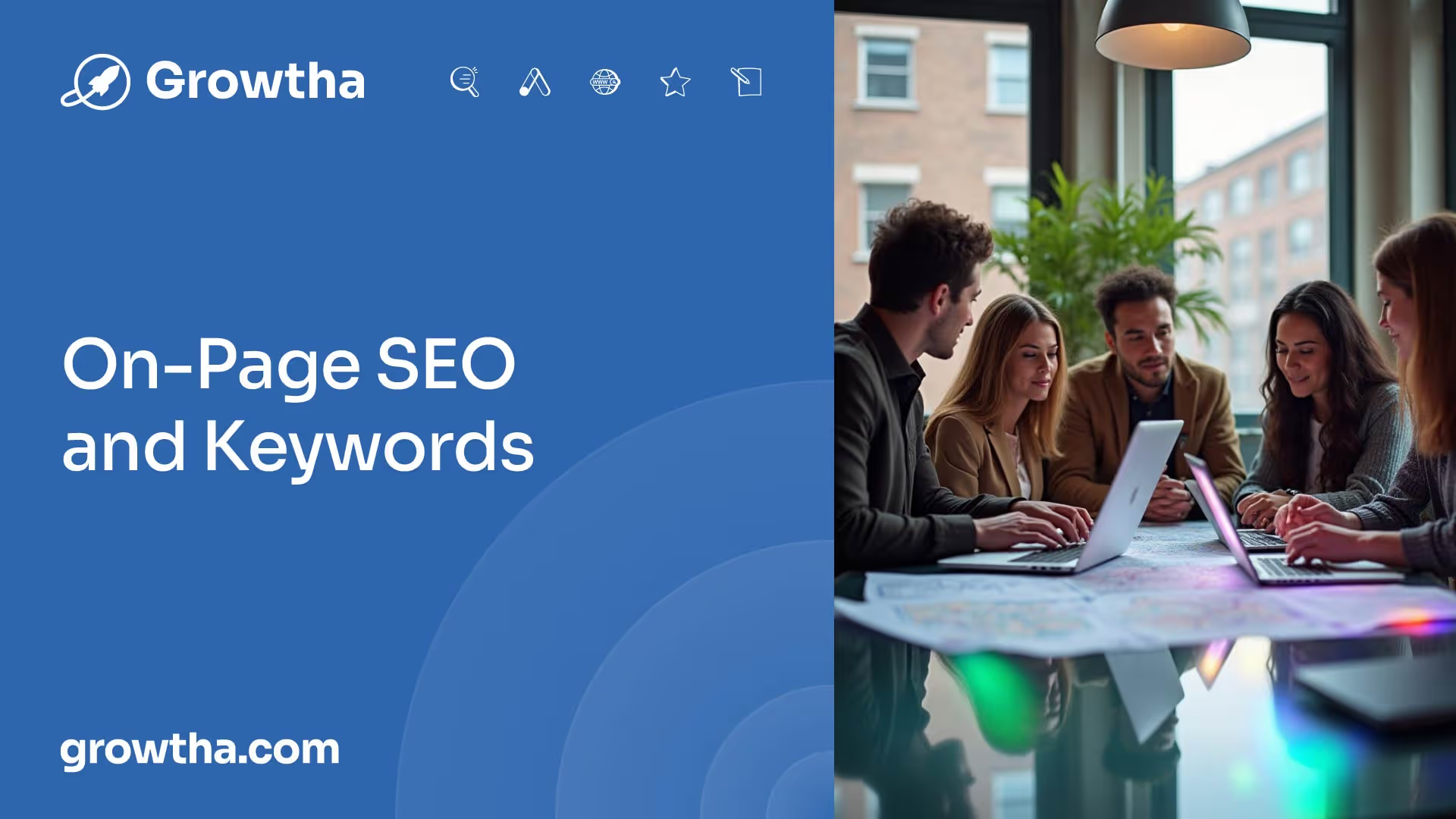How to Use Keywords for SEO Like a Pro
Keyword research is a fundamental aspect of SEO, as it helps businesses optimize their websites to match the terms and phrases that users search for on search engines like Google.


How to Use Keywords for SEO Like a Pro
Understanding Keywords for SEO
In the world of search engine optimization (SEO), understanding keywords is vital to achieving success in online visibility and website rankings. Let's explore the importance of keyword research and the different types of keywords that play a crucial role in SEO strategies.
Importance of Keyword Research
Keyword research is a fundamental aspect of SEO, as it helps businesses optimize their websites to match the terms and phrases that users search for on search engines like Google. In fact, Google alone processes over 8.5 billion searches per day, underscoring the significance of keyword research in ranking and optimizing websites on search engines [1].
By conducting thorough keyword research, businesses can uncover the specific words and phrases that their target audience is using to find information related to their products or services. This allows them to create relevant and optimized content that aligns with users' search intent, increasing the chances of appearing in search engine results pages (SERPs).
Proper keyword research is crucial to avoid losing potential audience and web traffic, as studies have shown that the majority of users are more likely to click on search results on the first page of SERPs. By targeting and optimizing for the right keywords, businesses can increase their visibility on search engines, leading to higher rankings and improved brand visibility.
Types of Keywords
Keywords can be classified into different types based on their length and specificity. Here are three common types of keywords:
- Short-Tail Keywords: Also known as head keywords, these are short and broad search terms that consist of one to two words. Examples include "SEO," "healthcare," or "digital marketing." Short-tail keywords generally have high search volumes but are highly competitive.
- Long-Tail Keywords: Long-tail keywords are longer and more specific search phrases that typically consist of three or more words. Examples include "best healthcare SEO strategies" or "how to use keywords for healthcare marketing." Long-tail keywords tend to have lower search volumes but higher conversion rates, as they better match user intent.
- Semantic Keywords: Semantic keywords are closely related to the main keyword and help provide context and relevance to the content. These keywords include synonyms, variations, and related terms. For example, if the main keyword is "healthcare SEO," semantic keywords could include "medical SEO," "healthcare marketing," or "SEO for hospitals."
Keyword research is the foundation of any good SEO strategy, with primary keywords being the main terms to rank for and secondary keywords supporting the primary keyword. Tools such as the Keyword Magic Tool can assist in finding these keywords [2]. By understanding the different types of keywords and conducting thorough research, businesses can optimize their website content and improve their chances of ranking higher in search engine results for relevant queries.
Implementing Keywords Effectively

To leverage the power of keywords for SEO, it is crucial to implement them effectively. This involves employing keyword optimization strategies and utilizing tools for keyword research.
Keyword Optimization Strategies
Proper keyword research is essential to avoid losing audience and web traffic. Studies have shown that 90% of respondents are more likely to click on search results on the first page of search engine results pages (SERPs) [1]. By targeting and optimizing for the right keywords, businesses can increase their visibility on search engines, leading to higher rankings and improved brand visibility.
Here are some effective keyword optimization strategies to consider:
- Relevance: Ensure that the keywords you target are relevant to your content and align with the search intent of your target audience. This helps search engines understand the context of your content and improves the chances of ranking higher.
- Keyword Placement: Strategically place your keywords in key areas of your webpage, such as the page title, headings, meta description, URL, and within the content itself. However, avoid keyword stuffing, as it can negatively impact user experience and search engine rankings.
- Variations and Synonyms: Include variations and synonyms of your target keywords to capture a wider range of search queries. This provides more opportunities for your content to be discovered by different user intents.
- Long-Tail Keywords: Incorporate long-tail keywords, which are longer and more specific phrases, into your content. Long-tail keywords often have less competition and can attract highly targeted traffic.
Tools for Keyword Research
Keyword research tools are invaluable for identifying relevant keywords and optimizing your content. Here are two popular tools for keyword research:
- Google Analytics: Utilize Google Analytics to identify popular pages on your website that are already receiving organic traffic. By analyzing the keywords that are driving traffic to these pages, you can uncover valuable insights and make minor adjustments to enhance their performance. This information can guide content optimization efforts for improved SEO.
- SEMrush: SEMrush is a comprehensive SEO tool that provides various features, including keyword research. It allows you to find keywords that your site is already ranking for and identifies opportunities for optimization to improve search rankings quickly. Paying attention to keywords where your content ranks between 4 and 10 is recommended for optimization efforts [3]. The Keyword Magic Tool within SEMrush is particularly useful for finding these keywords.
By implementing effective keyword optimization strategies and utilizing reliable keyword research tools, you can enhance your website's visibility, attract organic traffic, and improve your overall SEO performance. Remember to regularly analyze and adjust your keyword strategy based on the ever-evolving search landscape to stay ahead of the competition.
On-Page SEO and Keywords

When it comes to optimizing your website for search engines, on-page SEO plays a crucial role. This involves strategically placing keywords throughout your web pages to improve their visibility in search engine results. In this section, we will explore the importance of keyword placement, as well as the significance of relevance and volume in keyword usage.
Keyword Placement
Proper keyword placement is key to optimizing your web pages for search engines. By strategically incorporating keywords in various elements such as page titles, meta descriptions, subheadings, content, images, URLs, link anchor text, social media, and external listings, you can significantly impact your SEO rankings and visibility in search engine results [3].
Here are some key areas where keyword placement can make a difference:
- Page Titles: Including relevant keywords in your page titles can help search engines understand the topic of your page and improve its chances of ranking for those keywords.
- Meta Descriptions: While meta descriptions may not directly impact search rankings, they play a vital role in enticing users to click on your page when it appears in search results. Including keywords in meta descriptions can provide users with a clear understanding of what your page offers.
- Subheadings: Incorporating keywords in subheadings (H2, H3, etc.) helps search engines recognize the structure and relevance of your content. It also enhances readability for users.
- Content: Naturally integrating keywords throughout your content is essential. However, it's important to maintain a balance and avoid keyword stuffing, as this can negatively impact your SEO.
- URLs: Optimizing your URLs by including relevant keywords can make it easier for search engines to understand the content of your page.
- Image Alt Tags: Adding descriptive alt tags to your images with relevant keywords not only improves accessibility but also helps search engines understand the context of your images.
Remember, keyword placement should always be done in a natural and user-friendly manner. Prioritize providing valuable and informative content to your audience, while strategically incorporating keywords to enhance search engine visibility.
Importance of Relevance and Volume
When selecting keywords for your website, it's crucial to consider their relevance and volume. Relevance refers to how closely a keyword aligns with the content and purpose of your web page. Choosing keywords that accurately reflect the intent of your target audience will increase the chances of your page appearing in relevant search results.
Volume, on the other hand, refers to the average number of searches that a keyword receives. While it's tempting to target high-volume keywords, it's important to strike a balance. Highly competitive keywords may be challenging to rank for, especially if you are a smaller or newer website. Instead, consider targeting relevant keywords with lower competition to increase your chances of ranking higher in search results.
Proper keyword research is crucial to identify the right keywords to include on your web pages. Tools like Google Keyword Planner, SEMrush, and Moz Keyword Explorer can assist in finding relevant keywords with a suitable balance of volume and competition.
By strategically placing relevant keywords throughout your web pages, you can improve your website's visibility in search engine results, increase organic traffic, and attract more relevant visitors. Remember to maintain a natural flow of content and prioritize user experience alongside your keyword optimization efforts.
Long-Tail Keywords and SEO

In the realm of SEO, long-tail keywords play a crucial role in driving targeted traffic and enhancing the performance of websites. Unlike broad keywords, long-tail keywords consist of three or more words, catering to specific search intent and attracting visitors who are seeking specific solutions. Let's explore the benefits of utilizing long-tail keywords and how to transition to using long-tail phrases effectively.
Benefits of Long-Tail Keywords
Long-tail keywords have several advantages over their broader counterparts. While they may have lower search volume, they also face less competition, making it easier for websites to rank higher in search engine results and attract quality traffic [1]. By targeting long-tail keywords, websites have the opportunity to capture a niche audience that is more likely to convert, ultimately leading to higher conversion rates [4].
Additionally, long-tail keywords allow websites to cater to specific intent. When users search using long-tail queries, they are often looking for specific information, products, or services. By aligning content with these specific queries, websites can position themselves as valuable resources and guide visitors towards the solutions they seek [4].
Transitioning to Long-Tail Phrases
Transitioning from broader keywords to strategically chosen long-tail phrases requires meticulous research and understanding of audience intent. By conducting thorough keyword research, websites can identify relevant long-tail keywords that align with their content and target audience. It's important to focus on long-tail keywords that have reasonable search volume and less competition, allowing for increased visibility and higher rankings in search results.
To effectively transition to using long-tail phrases, it is essential to tailor content to address the specific queries and needs of the target audience. By creating high-quality, informative content that aligns with the long-tail keywords, websites can attract targeted traffic, improve engagement, and increase conversion rates. This approach helps establish websites as authoritative sources within their niche and fosters long-term relationships with visitors.
By incorporating long-tail keywords into an SEO strategy, websites can reap the benefits of attracting quality traffic and achieving higher conversion rates. Understanding the intent behind long-tail queries and tailoring content accordingly allows websites to connect with their target audience on a deeper level. Keep in mind that long-tail keywords have the potential to elevate SEO performance and drive meaningful results.
Content Optimization with Keywords

To maximize the effectiveness of SEO efforts, it is crucial to optimize content with the right keywords. Content optimization involves creating high-quality content that is both valuable to the audience and aligned with SEO best practices. In this section, we will explore two key aspects of content optimization: quality content for SEO and formatting for readability.
Quality Content for SEO
High-quality and original content is essential for successful SEO efforts. Search engines prioritize websites that provide value to the audience and offer unique information. It's important to create content that is informative, engaging, and relevant to the target audience. By delivering valuable content, websites can attract and retain visitors, increasing the chances of securing higher search engine rankings.
To ensure the quality of your content, you can utilize tools like Semrush's SEO Writing Assistant. This tool helps analyze content for quality and originality, providing insights and recommendations for improvement [2]. By following these recommendations, you can enhance the overall quality of your content, making it more likely to rank well in search engine results.
Formatting and Readability
In addition to quality content, formatting plays a crucial role in optimizing content for readability and user experience. Search engines consider factors like bounce rate, dwell time, and social shares when evaluating the relevance and usefulness of a webpage. By optimizing your content for readability and user experience, you can improve search engine rankings and enhance visitor engagement.
Here are some key tips for formatting content effectively:
- Use subheadings and bullet points: Break up your content into sections with clear subheadings. Utilize bullet points and numbered lists to make information more digestible and scannable.
- Incorporate relevant keywords: Strategically include your target keywords within the content, but ensure it is done naturally and does not compromise the readability.
- Include visuals: Use images, infographics, and videos to enhance the visual appeal of your content and make it more engaging for the audience. Alt tags for images should also include relevant keywords.
- Optimize meta tags: Craft compelling meta titles and descriptions that incorporate relevant keywords. These tags appear in search engine results and can influence click-through rates.
- Pay attention to readability: Use clear and concise language, avoiding jargon or overly complex terms. Break up long paragraphs and sentences to make the text more easily readable.
By following these formatting guidelines, you can improve the overall readability and user experience of your content, which in turn can positively impact your search engine rankings. Remember that optimizing content is an ongoing process, and it's important to regularly analyze and update your content strategy to align with SEO best practices.
Content optimization with keywords is a vital component of a successful SEO strategy. By creating high-quality content and ensuring it is formatted for readability and user experience, you can increase the visibility of your website, attract more organic traffic, and ultimately achieve your SEO goals.
Enhancing SEO Performance

To maximize the effectiveness of your SEO efforts, it's important to go beyond basic keyword optimization. In this section, we will explore two strategies to enhance your SEO performance: targeting featured snippets and using calls to action (CTAs) for engagement.
Targeting Featured Snippets
Featured snippets are small text excerpts that appear at the top of Google's search results, providing quick answers to search queries. Targeting keywords that trigger featured snippets can enhance visibility and drive more traffic to your website [2].
To optimize for featured snippets, consider the following tips:
- Identify common questions or queries related to your target keywords.
- Create content that directly answers these questions concisely and clearly.
- Use headings, lists, and tables to structure your content in a way that is easily scannable for search engines.
- Incorporate relevant keywords into your content, particularly in headings and subheadings.
- Provide comprehensive and authoritative information that addresses the user's query.
By optimizing your content for featured snippets, you increase the chances of your website being showcased at the top of search results, capturing the attention of users and driving more organic traffic.
Calls to Action for Engagement
Calls to action (CTAs) are essential for improving engagement metrics, such as time on page, bounce rate, and conversion rate. CTAs prompt users to take a specific action, such as signing up for a newsletter, requesting more information, or making a purchase. By strategically placing CTAs throughout your website, you can increase conversions, leads, and revenue, which are key goals of an SEO strategy.
Consider the following tips when using CTAs to enhance engagement:
- Clearly define the desired action you want users to take.
- Use compelling and persuasive language to encourage users to act.
- Ensure that your CTAs are visually prominent and easily noticeable on the page.
- Place CTAs strategically throughout your website, including within blog posts, landing pages, and product pages.
- Test different variations of CTAs to identify what resonates best with your target audience.
- Monitor and analyze the performance of your CTAs to make data-driven optimizations.
By incorporating strong CTAs into your website, you can guide users towards valuable actions and increase the overall engagement and success of your SEO efforts.
Remember, SEO is an ongoing practice that requires continuous improvement and adaptation as algorithms and user behavior evolve. By targeting featured snippets and implementing effective CTAs, you can enhance your website's visibility, engage your audience, and drive meaningful results in your SEO strategy.
References
[1]: https://surgegraph.io/keyword-research-101
[2]: https://www.semrush.com/blog/seo-tips/
[3]: https://optinmonster.com/using-keywords-to-improve-your-seo/







